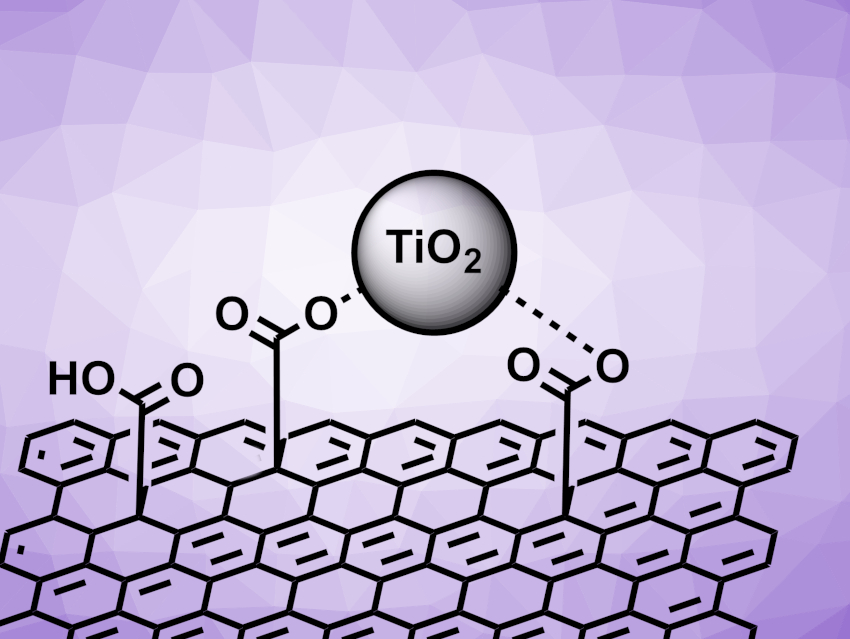Heterocycles that contain nitrogen atoms are often found, e.g., in bioactive compounds and are, thus, interesting for medicinal chemistry. 1,3,4-Oxadiazoles, for example, are often present in pharmaceutically active molecules. New methods for the synthesis of these five-membered heterocycles would be useful. In particular, the photocatalytic synthesis of these compounds is still challenging. TiO2 could be a useful catalyst in this context, but pure TiO2 suffers from drawbacks in the light that can be used (usually UV radiation) and in its reactivity. Composites in which TiO2 nanoparticles are immobilized on a suitable support could solve these problems.
Matías Blanco, José Alemán, Universidad Autónoma de Madrid, Spain, and colleagues have immobilized TiO2 nanoparticles on graphene acid (GA) to obtain a composite photocatalyst (simplified structure pictured) for the synthesis of 2,5-disubstituted 1,3,4-oxadiazoles. The team first prepared GA via an exfoliation and reaction of fluorographene with a cyanide source, followed by hydrolysis. Then, Ti(OiPr)4 was used as a precursor for the desired TiO2 nanoparticles. It was mixed with GA and subjected to hydrolysis to obtain the desired composite catalyst.
The researchers used the prepared heterogeneous photocatalyst in the synthesis of biologically relevant 1,3,4-oxadiazoles from ketoacids and hydrazides under visible light. The catalyst showed improved photoactivity compared to “bare” TiO2 and provided access to a wide range of oxadiazoles. It was recyclable and could be used for more than five reaction cycles.
- A Graphene Acid – TiO2 Nanohybrid as Multifunctional Heterogeneous Photocatalyst for the Synthesis of 1,3,4-Oxadiazoles,
Martina Sciarretta, Mariam Barawi, Cristina Navío, Víctor A. de la Peña O’ Shea, Matías Blanco, José Alemán,
ACS Appl. Mater. Interfaces 2022.
https://doi.org/10.1021/acsami.2c07880




